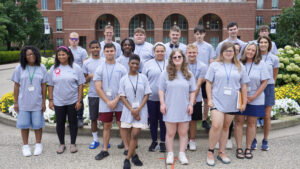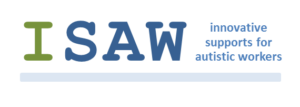There is a vast misconception among hearing Americans that American Sign Language is English on the hands, but in fact, it is a full language with its own unique syntax, grammar, idioms and modes of expression. Let’s take a dive into its fascinating history, and then we’ll explore some resources available to you right now to start learning how to sign.
In the early 1800s, Alice Cogswell, a nine-year-old girl, met her neighbor, Thomas Hopkins Gallaudet, who observed Cogswell’s high intelligence despite her being unable to speak or hear. Gallaudet decided he wanted to be able to communicate with Cogswell. He tried teaching her to read and write with some success, but Gallaudet and Cogswell’s father agreed that a formal education would yield better results. At the time, however, there were no deaf schools in the United States.
Gallaudet traveled to Europe to learn about deaf education methods, and when he came back to the U.S., he was accompanied by Laurent Clerc, a deaf educator who taught using French Sign Language (LSF). In 1817, Gallaudet and Clerc founded the American School for the Deaf.
Deaf students across America traveled to Hartford, Connecticut to attend the free public school. Up to this point, there was no standard sign language used in the country, so the students brought with them their individual home and community signs. As these signs mixed together and were influenced by Clerc’s native French Sign Language in his teaching, American Sign Language was born.
Many of the students who first attended Gallaudet and Clerc’s new school arrived from Martha’s Vineyard, a Massachusetts island south of Cape Cod with a high hereditary deaf population. From the mid 17th century until its extinction in 1954, Martha’s Vineyard did have its own sign language, which both hearing and deaf people used with high prevalence in the 18th and 19th centuries. Per The Atlantic: according to island records, the first congenitally deaf resident of Martha’s Vineyard was Jonathan Lambert, who immigrated in 1640 from Kent, England, bringing with him his regional sign language. Jonathan Lambert’s children, born on the island, were born deaf, and with them and the island’s next several generations, Lambert’s sign language grew and evolved into Martha’s Vineyard Sign Language (MVSL). As residents began moving into the mainland, in part for the new deaf school, the prevalence of MVSL began to decline. The last native signer or MVSL passed away in the 1950s, officially making it a dead language.
Today, American Sign Language (ASL) continues to evolve. For example, as illustrated by the New York Times article on the evolution of sign language, the sign for PHONE used to use two hands, depicting the motion of holding an old-school candlestick telephone transmitter to the mouth and receiver to the ear. Today, the common sign for PHONE is the familiar single-handed gesture of holding the hand to the ear with the thumb and pinky sticking out, or sometimes simply the hand position you use to hold a cell phone to your ear.
We also see ASL evolve with the high prevalence of small screens. When you’re signing via video call, the signs need to fit into the screen. The sign for DOG used to be a double pat on the upper thigh, whereas now it is more commonly signed with a different sign, which is tighter and directly in front of the body–an initialized version of the fingerspelling of the word in which the signer snaps twice.
And while social media has surely influenced the way regional signs spread, various dialects of ASL still exist, just as they do in spoken English. Furthermore, Black American Sign Language (BASL) developed independently from ASL due to education segregation, though not all Black Deaf signers use BASL. Oralism (an oppressive form of education in which deaf students were forced to prioritize non-signing methods of communication) was not as strongly imposed within Black Deaf schools as it was within white Deaf schools. Because of this, BASL tends to retain more of ASL’s early signs and linguistic tendencies. According to Victoria Garcia Unzueta, “Just as Black hearing people code-switch between standard English and Black English to fit in in the classroom or among white people, BASL users frequently code-switch between BASL and ASL.”
As culture shifts, so do signed depictions. In ASL, male-gendered signs tend to be signed at the forehead, while female-gendered signs tend to be signed at the chin. In recent years, a growing number of ASL users have begun to sign PARENTS at cheek, whereas the more traditional sign for PARENTS is gendered, using MOTHER (an open hand with thumb on chin) and FATHER (an open hand with thumb on forehead) in quick succession.
Another example of a culture shif is explained by Amanda Morris, a native signing CODA (child of Deaf adults. According to Morris, the sign for PRIVILEGE used to evoke the image of putting a dollar into a shirt pocket, whereas the newer version of the sign now evokes the image of raising one person above others. This change occurred as a result of the culture shift in which the Deaf community realized they needed a way to indicate privilege as a term related to inherent inequalities that extend beyond financial privilege.
Perhaps because the American Deaf community is much smaller than the global English-speaking community, there tends to be a lot more active discussion around new and improved ways to sign technical innovations, societal shifts and cultural concepts than we are used to seeing in regards to the English language.
Recently, Rach Kay, on Instagram as @suchalovelyred, asked her followers how they sign “gaslighting,” an English term which technically dates back to the 1930s but only came into popular usage in the past five to seven years. Gaslighting someone means to manipulate someone by making them question their own sanity, reality, or belief in their own memory. (In 2016, “gaslight” was voted by the American Dialect Society as the year’s “most useful/most likely to succeed” word.)
Kay shared the responses she received to the question of how fellow ASL users sign “gaslighting.” Many of the signs had to do with depictions of lighting fires or igniting gas lamps, while the seemingly most favored ones seemed to have more to do with the actual meaning of the word, showing various depictions of pressure, manipulation of the mind and negative persuasion.
In a Facebook group for advanced and native signers, the responses garnered hundreds of likes, shares and comments. The Facebook group, called ASL THAT, is one designated space for these sorts of discussions. Examples of group topics, per the group’s description, include:
- Current trends (popular topics, words or phrases in the news),
- Variations of signs (national, regional, local, cultural, style, age, race, sex, international, etc.),
- Interpretations of English words, phrases, quotes, idioms, and
- New and innovative signs (both widely accepted and suggested).
The group description goes on to explain that its goal is “conceptually accurate ASL expression, free of English influence.”
By both the natural, gradual evolution of language and the active discussions among Deaf ASL users, American Sign Language continues to grow and evolve at a rapid pace. For this reason, if you want to learn ASL, it is important to learn from a qualified member of the Deaf community.
If an in-person Deaf-led ASL class is not an option, two good free online resources for learning from qualified Deaf instructors include:
- Lifeprint by Bill Vicars
- Oklahoma School for the Deaf’s online course (offered for free until July 31, 2023)
American Sign Language is integrated as a cherished and core aspect of Deaf culture. Hearing individuals learning to sign should make a point to also learn about this history and culture.
If your interest in ASL is now piqued and you have a quick 30 seconds to spare, check out this video of the ASL alphabet, and try fingerspelling your name.
When you have 40 minutes to spare, check out Bill Vicars’s full “learn to fingerspell” video, and after that, move onto ASL lesson one.
If you ‘ve found this short(ish) history of ASL interesting, check out the sources used for this article below for a deeper dive into how .
Sources:
https://www.theatlantic.com/health/archive/2015/09/marthas-vineyard-sign-language-asl/407191/
https://www.nytimes.com/interactive/2022/07/26/us/american-sign-language-changes.html
https://www.npr.org/2022/08/04/1115758227/how-american-sign-language-is-evolving-with-time
https://www.facebook.com/watch/?v=1187214045005724
https://americandialect.org/wp-content/uploads/2016-Word-of-the-Year-PRESS-RELEASE.pdf



